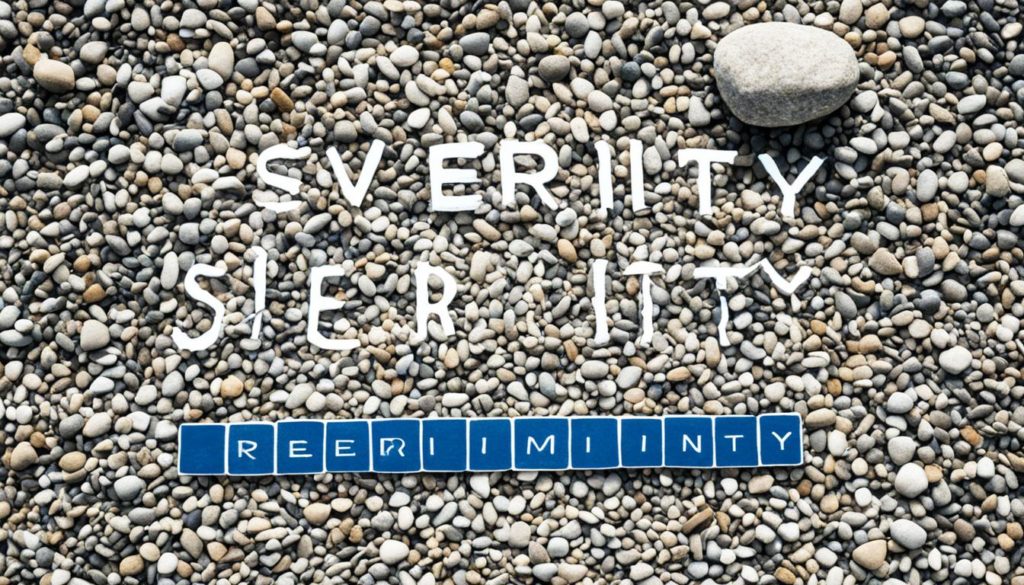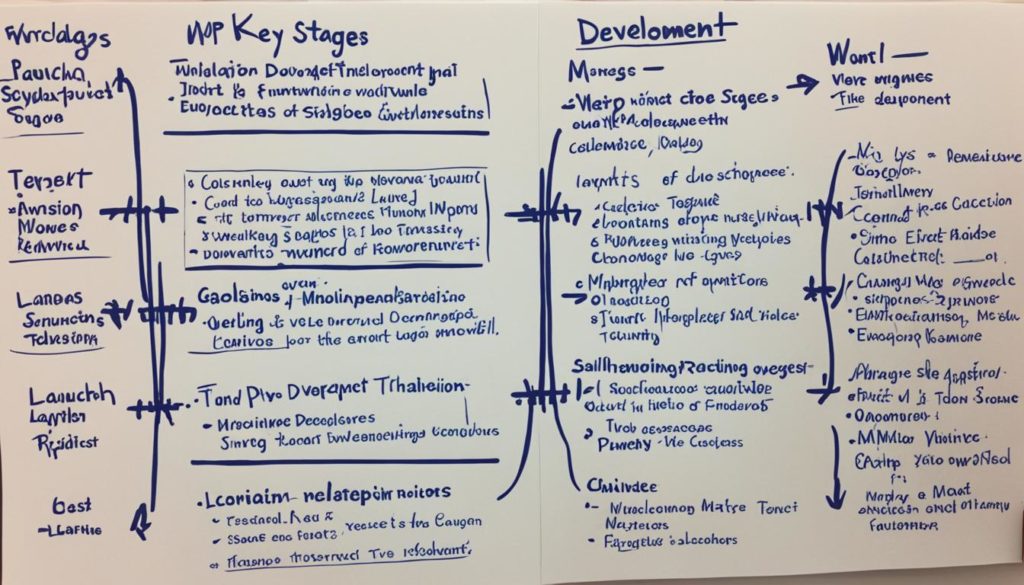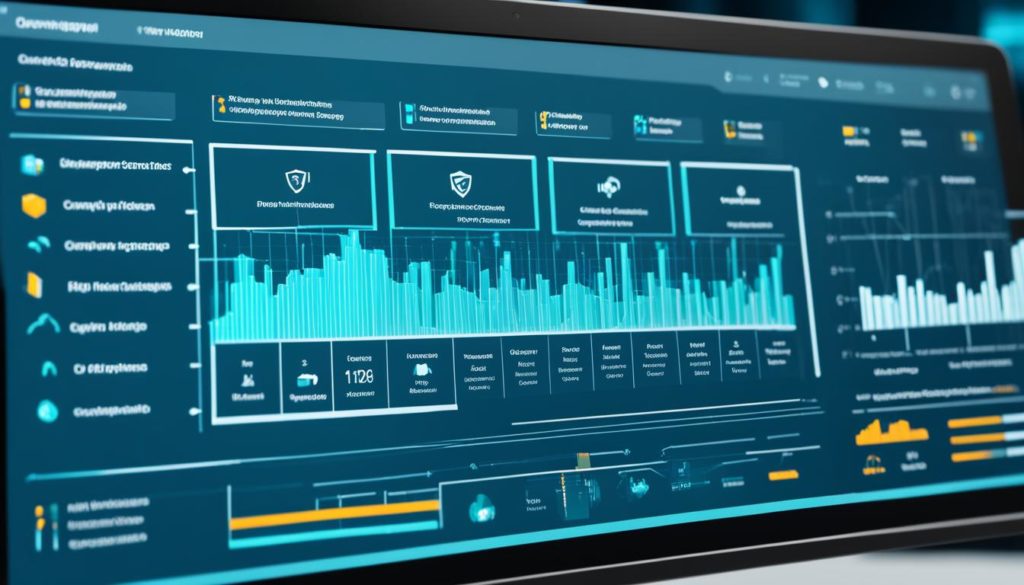
Did you know that companies using cross-functional teams are 21% more likely to report higher revenue growth than those without them? This shows how powerful it is to bring together different skills and create a team that works well together. Cross-functional teams are key to making new ideas, talking well, and solving problems fast in a company.
These teams mix people from different departments and sometimes even outside partners to reach a common goal. They face challenges like unclear goals and poor management. But, at places like CarMax, these teams have sped up feedback, development, and solving problems.
Key Takeaways
- Cross-functional teams are key for making new ideas and products faster.
- Bringing together different skills helps teams work better together and solve problems better.
- CarMax’s success shows how good cross-functional teams can be.
- Good communication and shared goals are key for cross-functional teams to do well.
- Companies with strong cross-functional teams often see more revenue growth.
What is a Cross-Functional Team?
Learning what is a cross-functional team means seeing how they work together. These teams mix people from different areas, each with their own skills. They work together to reach goals. This mix often leads to new ideas that might not happen in usual groups.
Definition and Structure
The cross-functional team definition is about a group with various skills aiming for the same goals. They go beyond usual department lines, combining talents from product management, engineering, marketing, and UX design. A key person, like a product manager, leads them, guiding towards success. This setup helps with clear communication and moving forward smoothly.
Roles and Responsibilities
Looking at cross-functional team roles, each member has specific but connected tasks. The product manager sets the direction, while developers and engineers handle the tech parts. UX designers make sure it’s easy for users, and marketers plan how to sell it. This clear role setup helps the team manage itself, promoting teamwork and shared leadership.
Common Goals and Objectives
Understanding what is a cross-functional team also means seeing their shared goals. Despite their different skills, these teams have a single vision. This shared aim helps them hit targets well and use their skills together. By sharing a common language and vision, they work well together, even from different backgrounds.
Advantages of Cross-Functional Teams
Cross-functional teams bring many benefits to organizations. They break down old barriers, making it easier for people to work together and think outside the box. These teams mix different skills and ideas, sparking creativity and new solutions.
These teams also make team members smarter about business. They learn about various parts of the company, helping them make better decisions. This mix of knowledge and skills helps spot risks early and solve problems better.
Another big plus is how they help with leadership and keeping employees happy. Team members get to lead tasks and projects, which boosts their skills and morale. This feeling of ownership makes them more engaged and responsible. As the article explains, this teamwork leads to positive changes and makes things run smoother.
These teams also push against old ways and focus on common goals. They’re more adaptable, making quick changes based on feedback and group ideas. The benefits of cross-functional teams go beyond just the project, creating a place where growth and improvement always happen.
Characteristics of Successful Cross-Functional Teams
Successful cross-functional teams mix diverse skills, clear talk, and strong self-management. These are key for boosting innovation and efficiency in managing projects.
Diverse Expertise and Perspectives
Successful teams have a mix of different skills and views. Members from various departments bring a wealth of knowledge and creative ways to solve problems. This diversity leads to more innovation and ensures solutions cover all angles.
Clear Communication Channels
Good communication is key in managing projects well. It makes sure info moves easily among team members, cutting down on mistakes and making coordination smoother. Teams should have regular meetings, use tools for working together, and encourage open talk to help meet company goals.
Self-Management and Accountability
Self-management and being accountable are big parts of a team’s success. Letting team members own their tasks and make choices helps them work better on their own and adapt to new project needs. Being accountable means everyone knows their job and works towards the team’s goals.
These characteristics of successful cross-functional teams help make a project environment that’s dynamic and full of new ideas. For more tips on building and leading such teams, check out more on cross-functional project management.
Cross-Functional Team Communication Strategies
Effective communication is key for cross-functional teams to succeed. By promoting a culture of openness, we can share information and ideas freely. This leads to more innovation and efficiency.
Importance of Open Communication
Open communication helps build trust and transparency in teams. When everyone feels safe sharing their thoughts, solving problems together becomes easier. This way, everyone can share valuable insights, breaking down barriers.
Tools and Technologies
Today, many tools and technologies help improve team communication. Platforms like Slack, Microsoft Teams, and Trello make it easy to work together, even from different places. These tools keep everyone informed and help avoid misunderstandings.
Overcoming Communication Barriers
Even with great tools, teams face communication challenges. Regular team-building activities and workshops help build a culture of openness. It’s also important for leaders to listen and give feedback. This ensures everyone’s voice is heard, breaking down barriers.
Real-World Examples of Cross-Functional Teams
Looking at cross-functional teams shows us how they work well in real life. CarMax, a top used car seller in the U.S., uses these teams to speed up product development and spark new ideas. They make sure every part of the customer experience meets what customers want.
Apple and Google are great examples of how cross-functional teams work. At Apple, designers, engineers, and marketers work together on product launches. This makes sure everything works well together. Google uses these teams to bring different ideas into their projects, creating big hits like Google Maps and Gmail.
Spotify is another great example. They have teams called “squads” that work together closely. These teams have people like software developers, data analysts, and product managers. They work together to make development fast and flexible.
| Company | Team Structure | Key Benefits |
|---|---|---|
| CarMax | Interdisciplinary teams focusing on customer experience | Accelerated development, increased innovation |
| Apple | Teams integrating designers, engineers, and marketers | Seamless product integration, cohesive launches |
| Diverse teams fostering inclusive project management | Revolutionary product development, enriched perspectives | |
| Spotify | Autonomous “squads” with various specialists | Agile development, rapid pace of innovation |
These examples show how companies use teamwork to reach their goals and spark new ideas.
Conclusion
Building successful cross-functional teams is more than just putting people from different departments together. It’s about creating a space where team members can grow, improve, and work towards a common goal. Important steps include making sure everyone can communicate well and valuing each person’s skills.
Having diverse teams helps use resources better and sparks new ideas. But it’s not just about having different people. It’s about using their skills together to make things better. By aiming for the best and using everyone’s strengths, we can achieve great results.
Creating effective cross-functional teams needs careful planning and picking the right people. Keeping a team spirit is key. Let’s keep aiming high and use cross-functional teamwork to achieve our goals.
FAQ
What is a cross-functional team?
A cross-functional team is a group of people with different skills. They work together, crossing department lines, to reach a common goal.
What are the roles and responsibilities within a cross-functional team?
In a cross-functional team, you’ll find a product manager like a CEO, a lead developer or engineer, and a UX designer. These roles work together, depending on each other, to lead and manage the team.
Why are cross-functional teams important?
Cross-functional teams bring together different skills and create a team culture. This leads to more creativity and faster innovation in making products.
What are the advantages of cross-functional teams?
The benefits include boosting innovation, motivating team members, encouraging learning and growth, improving communication and teamwork, and speeding up idea creation.
What are some examples of successful cross-functional teams?
Companies like CarMax have seen success with their cross-functional teams. These teams work independently and lead to quicker feedback, faster development, and better problem-solving.
What are the characteristics of successful cross-functional teams?
Successful teams have a mix of skills and views, clear communication, manage themselves, and take responsibility. These qualities help them adapt, grow, and achieve great results.
How can cross-functional teams benefit an organization?
They broaden understanding, challenge old ways, spot risks early, boost team engagement, and develop leadership skills. This leads to the organization’s success.
What are the common goals and objectives of cross-functional teams?
Goals include sharing a vision, driving innovation, and improving products or services through teamwork.
What strategies can be used to facilitate effective communication in cross-functional teams?
Strategies include encouraging open sharing of information, using the right tools, and breaking down barriers through commitment and team-building activities.
How do cross-functional teams encourage continuous learning and improvement?
By combining experts from various fields, these teams create a place where members learn from each other. This helps improve skills and knowledge continuously.
What tools and technologies are commonly used in cross-functional team communication?
Tools like Slack, Zoom, Microsoft Teams, and software for managing projects, such as Asana or Trello, help teams communicate and work together smoothly.
How can we overcome communication barriers in cross-functional teams?
To overcome barriers, focus on active management, team-building, workshops for openness, and understanding among team members.
Why is self-management important in cross-functional teams?
Self-management lets teams solve problems on their own and align with big goals. This ensures they make progress efficiently towards shared goals.
Future App Studios is an award-winning software development & outsourcing company. Our team of experts is ready to craft the solution your company needs.










